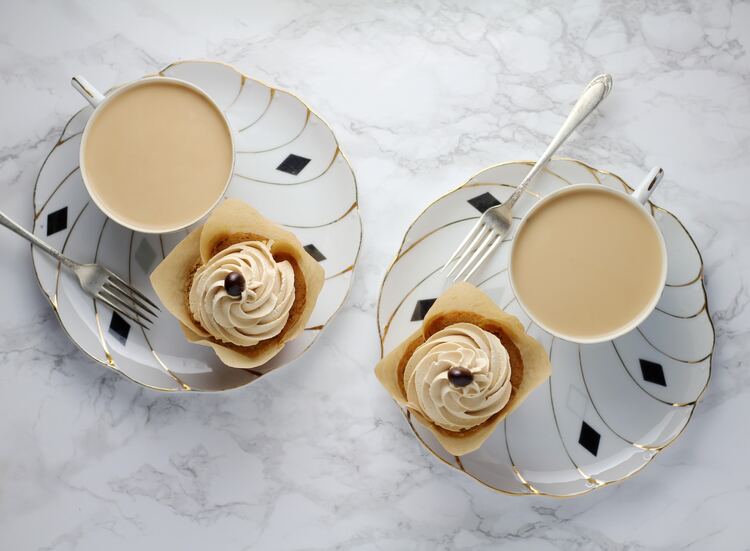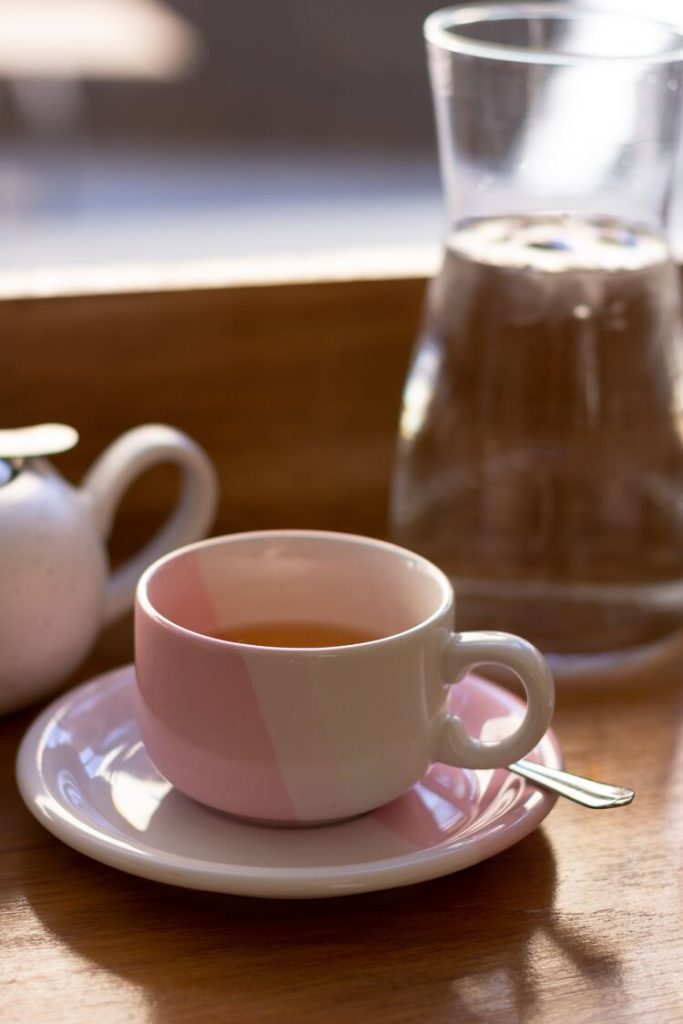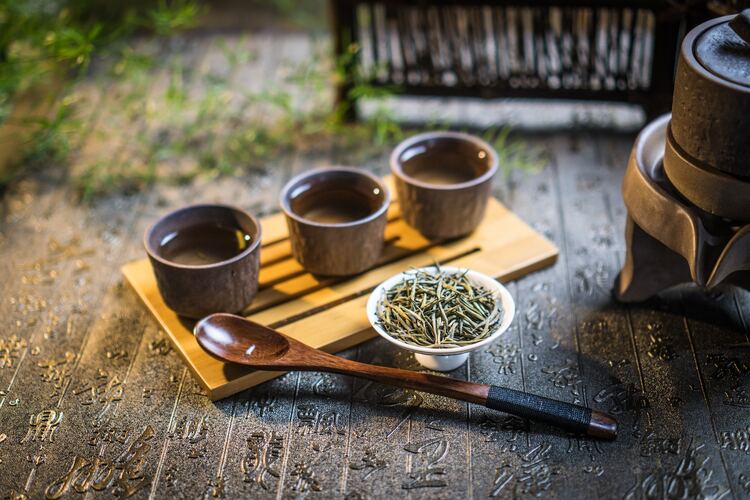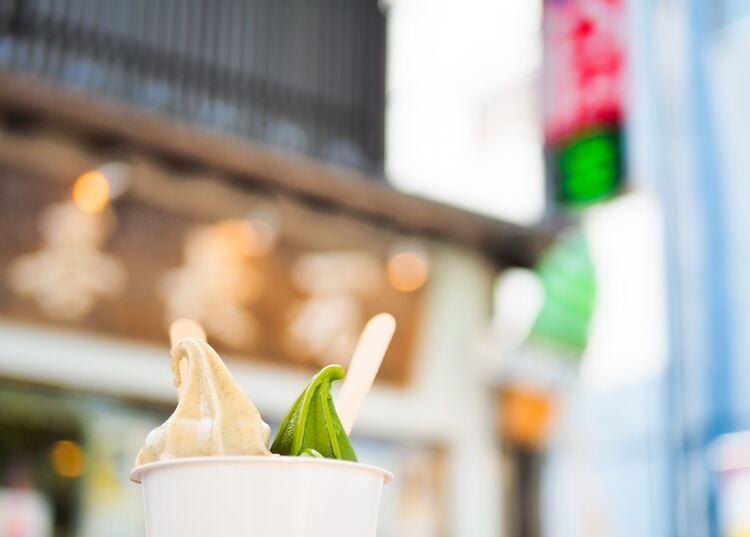In this article, we will discuss what Hojicha (or what is Hojicha tea), including its processing, variations, health benefits, and wonderful food pairings.
When exploring the world of Japanese teas, we often come across well-known favorites like matcha, and sencha. However, there’s another unique and flavorful tea that deserves our attention: Hojicha. As connoisseurs of tea and its many varieties, we believe it’s important to take a closer look at this lesser-known, but equally delightful treat.
Hojicha is a roasted green tea that originated in Kyoto, Japan, around a century ago. Unlike many other green teas, Hojicha is characterized by its rich, smoky flavor and inviting aroma. This distinct taste and scent result from roasting the tea leaves at a high temperature, which transforms the leaves’ natural chemical composition and reduces their caffeine content.
There’s no denying the allure of Hojicha, with its warm, comforting notes and versatile uses in various dishes and beverages. As we discuss this intriguing roasted green tea, we hope to share our passion and knowledge with fellow tea enthusiasts and those discovering this delightful beverage.
Please note: This article contains affiliate links, meaning I may earn a commission if you make a purchase by clicking a link. Of course, this comes at no extra cost to you and helps me to keep offering solid information to readers.

What is Hojicha?
Hojicha is a type of Japanese green tea that is uniquely roasted to give it a distinct flavor and aroma. Unlike traditional Japanese green teas that are steamed, Hojicha is made by roasting tea leaves over high heat, which results in a toasty, slightly smoky flavor. This process also reduces the caffeine content, making it a popular choice for those looking for a low-caffeine alternative to other teas.
Even though it has been enjoyed for quite some time, Hojicha has gained popularity recently for its great taste and numerous health benefits. Despite being a green tea, its appearance takes on a brownish hue due to the roasting process. The process not only imparts a distinctive flavor profile but also adds a pleasant, soothing aroma.
There are different varieties of Hojicha, depending on which part of the tea plant is used, such as:
- Hojicha made from leaves: This is the most common type, using the tea plant leaves.
- Hojicha made from stems: This variety utilizes the stems of the tea plant, resulting in a more robust flavor.
- Hojicha made from a blend of leaves and stems: This type combines both leaves and stems, offering a balanced flavor between the two.
History and Origin of Hojicha
The history of Hojicha dates back several centuries, and it holds a special place in Japanese tea culture.
The origin of Hojicha can be traced back to the Kyoto region in Japan, where it is said that tea merchants began roasting lower-grade tea leaves and stems to create a more affordable tea option for the average person.
This innovative roasting technique not only made tea more accessible to the masses but also helped reduce waste by utilizing parts of the plant that were often discarded.
Over time, roasted green tea grew in popularity, and the distinctive flavor profile of Hojicha became a beloved staple in Japanese households. The unique process of charcoal roasting distinguishes Hojicha from other green teas, as most green teas are steamed to preserve their fresh, grassy flavors. Roasting the leaves imparts a warm, nutty quality to the tea which has made it a favorite among those who prefer a less astringent taste.
Today, Hojicha is enjoyed worldwide for its delightful taste and soothing qualities.

Production and Processing
When it comes to producing Hojicha, there are certain techniques and tea varieties that contribute to its unique flavor and aroma. We’ll discuss those below.
Roasting Technique
To start, let’s touch upon the roasting technique that sets Hojicha apart from other Japanese green teas.
Traditionally, the leaves are roasted in a porcelain pot over charcoal at a high temperature. The roasting process removes the bitterness of the tea leaves, resulting in a toasty, slightly sweet flavor. Modern production typically uses electric ovens or gas-heated machines for a more controlled and uniform roast. The roasting process not only affects the taste but also the color of the tea, turning the green leaves into a reddish-brown hue.
As the roasting time and temperature may vary depending on the desired flavor profile, it is essential to be mindful of these factors during the process. Roasting the leaves for a shorter time at a lower temperature will retain some of the original green tea flavors, while a longer and hotter roast will bring out more of the distinct toasted notes of Hojicha.
Tea Varieties
There are several tea varieties used in the production of Hojicha, and each has its unique characteristics. Some common varieties include:
- Bancha: This is the most common base for Hojicha. Bancha is harvested from the same tea plant as Sencha but is picked later in the season. Because of its later harvest, the leaves are larger and coarser, making them less expensive and milder in flavor than other green teas.
- Kukicha: Also known as twig tea, Kukicha is a blend of tea leaves and twigs from the tea plant. Its natural sweetness and low caffeine content make it an excellent choice for a relaxing evening brew.
- Sencha: Occasionally, Sencha leaves (tea made with the first leaves plucked during the harvest season) are used to produce a more refined and premium-grade Hojicha. Sencha is the most popular green tea variety in Japan, known for its delicate yet invigorating flavor profile.
By choosing the right base and applying the proper roasting technique, producers create a wide range of flavors within the Hojicha category. Consequently, we can guarantee there is a variety of this tea that will suit your personal preference (whether you prefer a milder, sweeter taste, or a more robust, toasty flavor).
Health Benefits and Properties
Now that we have a better understanding of what is Hojicha, it is time to move on to its health benefits.
Caffeine Content
One of the main reasons people choose Hojicha over other types of tea is because of its lower caffeine content. Caffeine is a natural stimulant that can be found in different amounts in various kinds of teas. While it can help provide energy and alertness, excessive consumption may lead to negative side effects such as jitters or difficulty sleeping.
Since Hojicha is made by roasting green tea leaves, the caffeine content is substantially lower when compared to other types of green tea. This makes it a particularly suitable option for individuals who are sensitive to caffeine or prefer a less stimulating beverage, especially in the evenings.
Specifically, an 8-ounce cup of non-roasted green tea has 25 to 45 milligrams of caffeine. In contrast, a Hojicha cup of the same size has 7 to 15 milligrams of caffeine.
Antioxidants
In addition to its lower caffeine content, Hojicha also contains various beneficial antioxidants. Antioxidants help protect our cells from damage caused by free radicals, which can lead to various health issues and aging.
Despite the roasting process, Hojicha retains many antioxidants, particularly catechins. Catechins are a type of polyphenol that has been shown to have numerous health benefits, including;
- Reducing inflammation
- Improving heart health
- Boosting metabolism
- Supporting weight management

Brewing Techniques and Suggestions
Regarding brewing Hojicha, we recommend starting with high-quality, loose-leaf tea. We’ve found that using water heated between 80°C to 90°C (176°F to 194°F) brings out the best flavor and aroma in this particular type of tea. You’d be amazed at the difference water temperature can make in the taste of your tea!
When preparing Hojicha, it’s essential to use the right amount of tea for the volume of water being used. We suggest putting 5 grams (about one teaspoon) of loose-leaf tea per 250ml (8.45oz) of water in a teapot. You can double or triple these amounts if you want to prepare more tea.
Next, steep the tea for about 30 seconds to a minute, depending on your desired strength of flavor. Remember that a longer steeping time may result in a more robust taste, but also increase the bitterness. Feel free to experiment with the steeping times to find the perfect balance that suits your taste buds.
To ensure an optimal tea experience, take your time to pour the brewed tea into cups evenly to distribute the flavors consistently for each person’s cup. If you prefer your tea to a lighter flavor profile, you may opt to add a bit of hot water to dilute the tea to your taste.
If you’d like to add a personal touch to your tea, feel free to add a splash of milk or a sprinkle of cinnamon. The beauty of tea is its ability to be tailored to your unique tastes, so take this opportunity to get creative and find your perfect blend!
Culinary Uses and Pairings
When it comes to enjoying Hojicha, there is a vast array of culinary possibilities to consider. This roasted tea is not only a delightful tea to sip on, but it can also be incorporated into various dishes, both sweet and savory.
As a tea, Hojicha pairs exceptionally well with foods that complement its nutty, roasted flavor profile. Pastries, chocolates, and creamy desserts make excellent pairing choices. Some of our favorite foods to enjoy alongside a cup of tea include:
- Rich chocolate truffles
- Buttery shortbread cookies
- Delicate cream puffs
Hojicha’s culinary versatility extends beyond pairing possibilities; its distinct flavor can also enhance various recipes. Many trendy cafes and bakeries have started infusing Hojicha into sweets and desserts, such as:
Ice Cream
This cool, creamy dessert is a delicious twist on classic green tea ice cream. The smoky notes of Hojicha balance beautifully with the richness of the cream.
Latte
Brewing Hojicha as a concentrate and combining it with steamed milk creates a comforting and warming beverage, perfect for chilly days.
Cheesecake
Infusing Hojicha into the filling of a cheesecake adds a delightful roasted flavor to this classic creamy dessert.

Hojicha Buying Recommendations
We recommend visiting your nearest tea specialist to obtain high-quality products and deepen your tea knowledge. Besides, you may be able to try several tea brands before making a purchase decision.
Since we know not everybody has the time to stop by a local tea provider, here are our top loose-leaf recommendations (from online retailers, since we are advocates of enjoying the full flavor profile of tea):

Organic Japanese Hojicha – Yabukita Cultivar


Popular Hojicha Products
As Hojicha gains popularity, we’ve noticed several delicious and innovative products hitting the market. Here are a few of our favorites:
This is great for those who love to get creative in the kitchen. This fine, dissolvable powder adds a unique touch to desserts, lattes, and savory dishes.
Yamasan Hojicha Powder Organic


Teabags
For a convenient and fuss-free option, teabags are the way to go. Simply steep in hot water and enjoy a warm, comforting cup of Hojicha.

Latte Mix
This is a pre-made blend of Hojicha powder, sweetener, and non-dairy creamer – just add hot water for a delicious and creamy Hojicha latte at home!

Hojicha is one of my favorite tea varieties. I am glad I was able to write about it. Hope you have enjoyed the article and learned something new. Until next time!
Have you ever asked yourself what is Hojicha? Have you heard about this green tea variety before?
More About Green Tea
What Does Green Tea Taste Like?
The Process of Making Green Tea